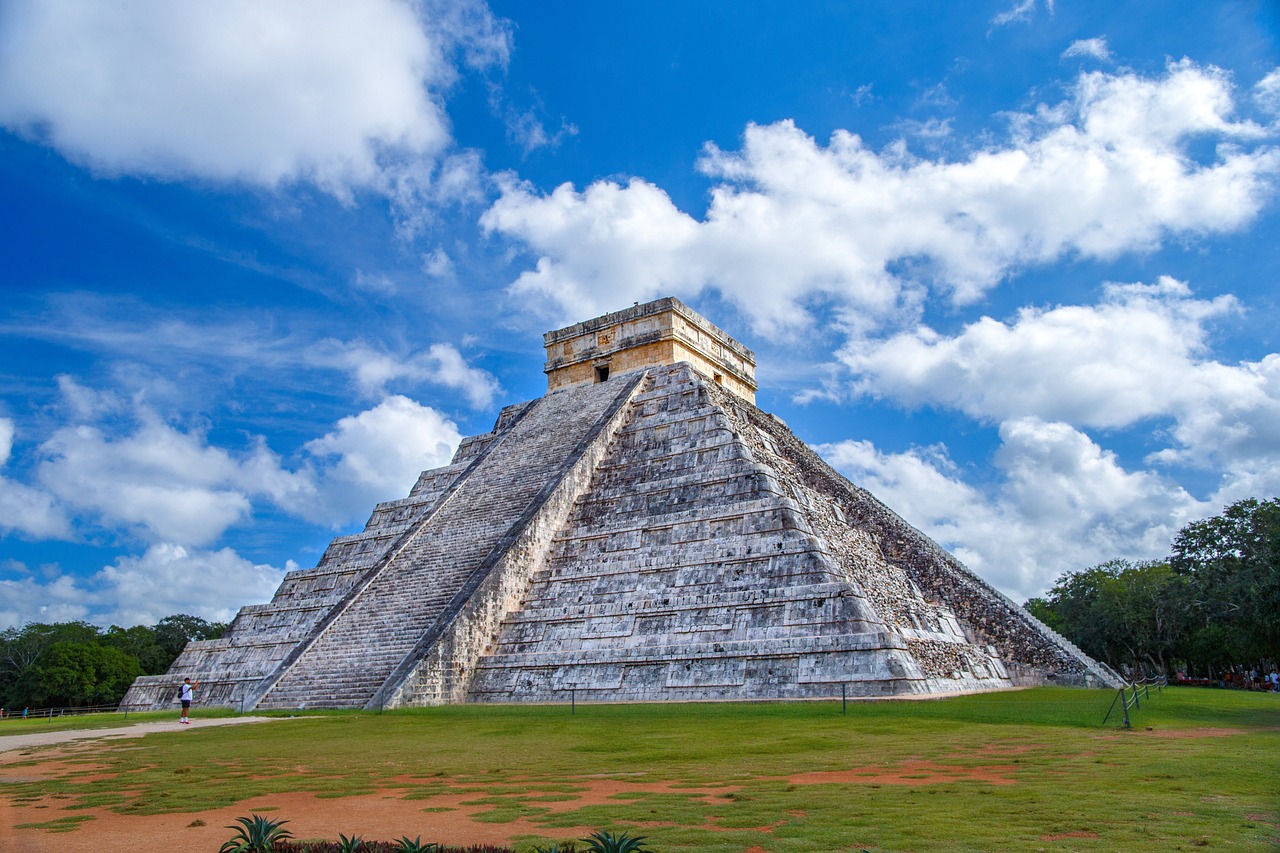The Discovery of the Ancient Kingdom of Kush
Imagine stumbling upon a hidden treasure trove, a forgotten kingdom shrouded in mystery and grandeur. This is the awe-inspiring tale of the discovery of the ancient Kingdom of Kush, nestled in the heart of present-day Sudan. As archaeologists delved into the sands of time, they unearthed a civilization rich in culture, history, and significance.
Centuries ago, the Kingdom of Kush flourished along the fertile banks of the Nile River, its strategic location serving as a gateway to both the African interior and the Mediterranean world. Blessed with abundant natural resources and a network of trade routes, Kush became a powerhouse in the region, attracting the attention of neighboring civilizations.
The historical timeline of Kush is a tapestry woven with threads of conquest, innovation, and cultural exchange. From its humble beginnings as a regional power to its zenith as a formidable empire, Kush witnessed the rise and fall of mighty rulers, leaving behind a legacy that echoes through the annals of time.
One of the most striking aspects of Kushite civilization is its remarkable architecture and monuments. The kingdom's engineers and artisans crafted awe-inspiring pyramids, temples, and palaces, showcasing advanced building techniques and artistic prowess that rivaled even the grandeur of ancient Egypt.
Religion and beliefs held a profound influence on the daily lives of the Kushite people. Their pantheon of deities, intricate rituals, and spiritual practices reflected a blend of indigenous traditions and the enduring legacy of Egyptian religion, shaping the cultural identity of the kingdom.
Trade was the lifeblood of Kush, connecting distant lands and fueling its economy. As a vital link between sub-Saharan Africa and the Mediterranean, Kush played a pivotal role in the exchange of goods, ideas, and technologies, fostering a vibrant network of commerce that enriched the kingdom.
However, like all great empires, Kush eventually faced challenges that led to its decline. Yet, the legacy of Kush endured, influencing subsequent African civilizations and cultures, leaving an indelible mark on the tapestry of history.
The interactions between Kush and neighboring civilizations, particularly ancient Egypt, were marked by diplomatic alliances, conflicts, and cultural exchanges that shaped the course of both kingdoms. These interactions forged lasting bonds and rivalries that defined the political landscape of the region.
Today, modern excavations and research continue to unravel the mysteries of Kush, shedding new light on its history and significance. Archaeologists tirelessly uncover artifacts and inscriptions that offer tantalizing glimpses into the past, enriching our understanding of this ancient kingdom.

Location and Geography of Kush
The Kingdom of Kush, an ancient civilization that flourished in what is now present-day Sudan, boasted a strategic location along the Nile River that greatly influenced its development and interactions with neighboring regions. Situated to the south of Egypt, Kush occupied a vital position in the trade routes connecting sub-Saharan Africa with the Mediterranean world. The geographical features of Kush included fertile lands along the Nile, allowing for agricultural prosperity and sustaining a thriving population.
Moreover, the Kingdom of Kush was rich in natural resources such as gold, ivory, and ebony, which not only contributed to its economic prosperity but also attracted the interest of other civilizations seeking to exploit its wealth. The Nile River played a crucial role in the life of the Kushites, providing a source of water for irrigation, transportation, and facilitating trade with distant lands.
Due to its proximity to Egypt, Kush maintained close cultural and political ties with its northern neighbor while also asserting its independence and distinct identity. The kingdom's location allowed it to benefit from the knowledge and technologies of ancient Egypt, influencing its architectural styles, religious beliefs, and administrative practices.
The strategic positioning of Kush along the Nile River enabled it to control key trade routes, establishing lucrative commercial networks that extended to distant lands. The kingdom's economy thrived on the exchange of goods such as incense, exotic animals, and precious metals, further enhancing its status as a prominent player in the ancient world.

Historical Timeline of Kush
The historical timeline of the ancient Kingdom of Kush is a fascinating journey through the rise and fall of a powerful civilization that left a lasting mark on the history of Africa. The roots of Kush can be traced back to around 2500 BCE when it emerged as a regional power in the Nile Valley. Over the centuries, Kush grew in influence and prosperity, eventually becoming an empire that rivaled its neighbor, Egypt.
One of the pivotal moments in Kushite history was the conquest of Egypt around 750 BCE, when the Kushite ruler Piye established the 25th Dynasty and united the two kingdoms under his rule. This period, known as the Kushite or Nubian Dynasty, marked a high point in Kushite power and cultural exchange with Egypt.
During the reign of King Taharqa, the Kingdom of Kush reached its zenith, with impressive architectural projects such as the construction of the Kawa Temple and the Great Temple of Amun at Jebel Barkal. These monuments not only showcased the wealth and power of Kush but also reflected the strong religious beliefs of its people.
However, the decline of Kush began in the 4th century BCE due to internal strife, invasions from neighboring powers, and the shifting tides of trade routes. The Kingdom of Kush eventually fragmented into smaller states, losing its former glory and influence in the region.
Despite its decline, the legacy of Kush endured through its cultural and religious influence on subsequent African civilizations. The Kushite language and writing system, as well as their unique artistic styles, continued to shape the identity of the region long after the kingdom had faded into obscurity.
Modern archaeological excavations have shed new light on the history of Kush, uncovering ancient cities, burial sites, and artifacts that offer valuable insights into the daily life and customs of the Kushite people. Ongoing research projects continue to unravel the mysteries of this enigmatic civilization, adding to our understanding of its significance in the ancient world.

Architecture and Monuments of Kush
The architecture and monuments of the ancient Kingdom of Kush stand as a testament to the advanced building techniques and artistic prowess of this civilization. One of the most notable architectural achievements of Kush is the construction of pyramids, similar to those found in Egypt but with their unique style and purpose. These pyramids served as royal burial sites for Kushite kings and queens, showcasing the significance of the rulers in Kushite society.
Furthermore, the temples in Kush were grand structures dedicated to various deities worshipped by the people. These temples were adorned with intricate carvings and paintings, depicting religious scenes and rituals. The Temple of Amun at Jebel Barkal is a prime example of the religious devotion and architectural skill of the Kushites, with its massive pillars and hieroglyphic inscriptions.
Palaces in Kush were also remarkable architectural feats, serving as administrative centers and residences for the ruling elite. The Royal Palace at Meroe, with its elaborate courtyards and decorated chambers, reflected the wealth and power of the Kushite monarchs. The layout of these palaces provided insights into the social structure and daily life of the Kushite society.
Moreover, the city of Meroe itself was a hub of architectural innovation, with its urban planning and infrastructure showcasing the advanced civilization that thrived in Kush. The city's layout, complete with residential areas, markets, and industrial zones, demonstrated the organization and sophistication of Kushite urban life.
In addition to these architectural wonders, the Kushites also left behind numerous rock-cut tombs and stelae, which served as commemorative markers for important individuals. These monuments, adorned with inscriptions and reliefs, provided valuable historical and cultural information about the people of Kush and their achievements.

Religion and Beliefs in Kush
The Kingdom of Kush had a rich tapestry of religious beliefs that played a significant role in the daily lives of its people. The Kushites worshipped a diverse pantheon of deities, with each deity representing different aspects of nature and human experiences. The most prominent deity in the Kushite religion was Amun, the god of creation and fertility, who was often depicted with a ram's head. Other important deities included the lion-headed goddess Sekhmet, associated with war and healing, and the falcon-headed god Horus, symbolizing kingship and protection.
Religious rituals and ceremonies were an integral part of Kushite society, with priests and priestesses serving as intermediaries between the people and the gods. The Kushites believed in the afterlife and practiced elaborate funerary rites to ensure a smooth transition for the deceased into the next world. They built magnificent temples dedicated to their gods, adorned with intricate carvings and hieroglyphics that depicted religious myths and stories.
The religion of Kush was heavily influenced by the neighboring civilization of ancient Egypt, with whom they had close diplomatic and cultural ties. As a result, many Egyptian religious practices and beliefs were adopted and adapted by the Kushites, leading to a syncretic religious tradition that combined elements of both cultures.
One of the most fascinating aspects of Kushite religion was the cult of the Apedemak, a lion-headed warrior god who was unique to the region. Apedemak was revered as a powerful protector and a symbol of royal authority, often depicted in art and inscriptions wearing a headdress adorned with solar disks and cobras.
Overall, the religious beliefs of the Kingdom of Kush reflected a complex tapestry of influences from various cultures, blending to create a distinctive spiritual tradition that shaped the identity and worldview of the Kushite people.

Trade and Economy of Kush
The Kingdom of Kush was a thriving civilization that flourished due to its robust trade networks and prosperous economy. Situated in a strategic location along the Nile River, Kush benefited from its access to valuable natural resources and its position as a vital link between sub-Saharan Africa and the Mediterranean world.
Trade was the lifeblood of the Kushite economy, with merchants traveling far and wide to exchange goods such as gold, ivory, ebony, and incense. These commodities were highly sought after in the ancient world, attracting traders from distant lands eager to engage in lucrative transactions with the Kushites.
One of the key trade routes that passed through Kush was the famous Incense Route, which connected the kingdom to the Arabian Peninsula and facilitated the exchange of frankincense and myrrh. This trade route not only enriched the Kushite coffers but also brought exotic goods and cultural influences to the region.
The economy of Kush was also supported by its agricultural productivity, with the Nile River providing fertile land for farming. The cultivation of crops such as wheat, barley, and millet allowed the Kushites to sustain a growing population and generate surplus food for trade.
Moreover, the Kingdom of Kush was known for its skilled craftsmen who produced exquisite pottery, jewelry, and textiles highly prized in the ancient world. These artisanal goods were traded extensively, contributing to the wealth and prestige of the kingdom.
As a crucial intermediary between different regions, Kush played a significant role in facilitating cultural exchanges and fostering diplomatic relations with neighboring civilizations. The kingdom's economic prosperity and commercial activities not only strengthened its political influence but also enriched its cultural heritage.
In conclusion, the trade and economy of Kush were fundamental to its success and prominence in the ancient world. By harnessing its natural resources, engaging in commerce with distant lands, and showcasing its artistic craftsmanship, the Kingdom of Kush established itself as a vibrant hub of economic activity and cultural exchange.

Decline and Legacy of Kush
As the Kingdom of Kush reached its peak, it also faced a period of decline that eventually led to its downfall. Various factors contributed to the decline of this once-powerful empire, including internal strife, external invasions, and shifts in trade routes. The weakening of central authority and the rise of competing factions within the kingdom destabilized its governance, making it vulnerable to outside threats.
One significant event that marked the decline of Kush was the invasion by the Kingdom of Axum from the Ethiopian highlands. This invasion not only weakened the military strength of Kush but also disrupted its trade networks and economy. The loss of key trade routes and resources dealt a severe blow to the prosperity of the kingdom, further exacerbating its decline.
Additionally, the rise of new regional powers in the surrounding areas, such as the Kingdom of Aksum and the Roman Empire, posed further challenges to the Kingdom of Kush. These emerging powers competed for control over trade routes and resources, diminishing the influence and power of Kush in the region.
Despite its eventual decline, the legacy of the Kingdom of Kush endured and left a lasting impact on subsequent African civilizations. The architectural achievements, artistic styles, and cultural practices of Kush influenced neighboring societies and continued to resonate long after its political power waned.
The legacy of Kush can be seen in the enduring traditions of Nubian culture, the adoption of certain religious beliefs and practices by later civilizations, and the architectural influences that persisted in the region. The remnants of Kushite civilization serve as a testament to the once-great empire that thrived along the banks of the Nile River.

Interactions with Egypt and Other Civilizations
When exploring the interactions between the Kingdom of Kush and ancient Egypt, a fascinating tapestry of diplomatic relations, conflicts, and cultural exchanges unfolds. Situated to the south of Egypt along the Nile River, Kush maintained a complex relationship with its northern neighbor. At times, the two civilizations engaged in trade and political alliances, while at other times, they clashed in military conflicts.
One of the most notable aspects of the relationship between Kush and Egypt was the influence of Egyptian culture on the Kushite society. The Kushite rulers adopted many aspects of Egyptian religion, art, and architecture, leading to a unique blend of cultural elements in the region. This cultural exchange enriched both civilizations, contributing to the development of art, language, and technology in Kush.
Moreover, the Kingdom of Kush served as a crucial intermediary between sub-Saharan Africa and the Mediterranean world, facilitating trade and cultural interactions between diverse civilizations. The strategic location of Kush along the Nile River allowed it to control key trade routes, enabling the exchange of goods, ideas, and technologies between different regions.
Despite occasional conflicts, the interactions between Kush and Egypt were not limited to military confrontations. Diplomatic missions and royal marriages were common practices between the two kingdoms, fostering political alliances and diplomatic ties. These interactions played a significant role in shaping the political landscape of the ancient Nile Valley and beyond.
Furthermore, Kush also had interactions with other neighboring civilizations, such as the Kingdom of Meroe and the Axumite Empire. These interactions involved trade partnerships, cultural exchanges, and occasional conflicts over territorial disputes. The Kingdom of Kush's ability to navigate these complex relationships demonstrates its diplomatic acumen and strategic importance in the ancient world.

Modern Excavations and Research on Kush
Modern excavations and research on the ancient Kingdom of Kush have shed new light on this fascinating civilization, uncovering a wealth of information about its history and significance. Archaeologists and historians have been conducting extensive studies in the region, utilizing advanced technologies and methodologies to unearth hidden treasures buried beneath the sands of time.
One of the most remarkable discoveries in recent years has been the excavation of royal tombs in the ancient city of Kerma, the capital of the Kingdom of Kush. These tombs have provided valuable insights into the burial practices and funerary rituals of the Kushite rulers, revealing intricate artifacts and precious treasures that reflect the wealth and power of this ancient civilization.
Furthermore, ongoing research projects have focused on deciphering the inscriptions found on monumental structures such as the pyramids and temples of Kush. These inscriptions, written in the ancient Meroitic script, have posed a significant challenge to scholars, but recent advancements in linguistic analysis have enabled researchers to make significant progress in understanding the language and culture of the Kushite people.
In addition to archaeological excavations, scientific studies have been conducted to analyze the DNA of ancient Kushite remains, providing valuable genetic data that offers insights into the origins and migrations of the people of Kush. By studying the genetic diversity of the population, researchers have been able to trace the ancestral roots of the Kushite civilization and its connections to other ancient African societies.
Moreover, collaborative efforts between international teams of experts have led to the development of comprehensive databases and digital reconstructions of Kushite sites, allowing researchers to virtually explore and reconstruct the ancient landscapes and architectural marvels of this once-mighty kingdom. These digital reconstructions have provided new perspectives on the urban planning and engineering prowess of the Kushite civilization.
Overall, modern excavations and research on the Kingdom of Kush continue to unravel the mysteries of this ancient civilization, enriching our understanding of its cultural achievements, political dynamics, and interactions with neighboring civilizations. The ongoing efforts of archaeologists and scholars promise to reveal even more fascinating discoveries that will further enhance our knowledge of the legacy of Kush in the annals of history.
Frequently Asked Questions
- What is the significance of the Kingdom of Kush?
The Kingdom of Kush holds great historical significance as one of the earliest known African civilizations. It played a crucial role in the trade networks between sub-Saharan Africa and the Mediterranean world, influencing the cultural and economic landscape of the region.
- Where is the Kingdom of Kush located?
The Kingdom of Kush was situated along the Nile River in present-day Sudan. Its strategic location allowed it to control key trade routes and access valuable natural resources, contributing to its prosperity and power.
- What architectural wonders can be found in Kush?
Kush is known for its impressive architectural achievements, including pyramids, temples, and palaces. These structures showcase the advanced building techniques and artistic styles of the Kushite civilization.
- How did the Kingdom of Kush interact with Egypt?
The Kingdom of Kush had complex diplomatic relations with ancient Egypt, at times trading partners and at other times engaging in conflicts. The Kushites also adopted elements of Egyptian religion and culture, leaving a lasting impact on their own society.
- What led to the decline of the Kingdom of Kush?
Several factors contributed to the decline of the Kingdom of Kush, including environmental changes, invasions by neighboring powers, and internal conflicts. Despite its eventual decline, the legacy of Kush continued to influence subsequent African civilizations.



















